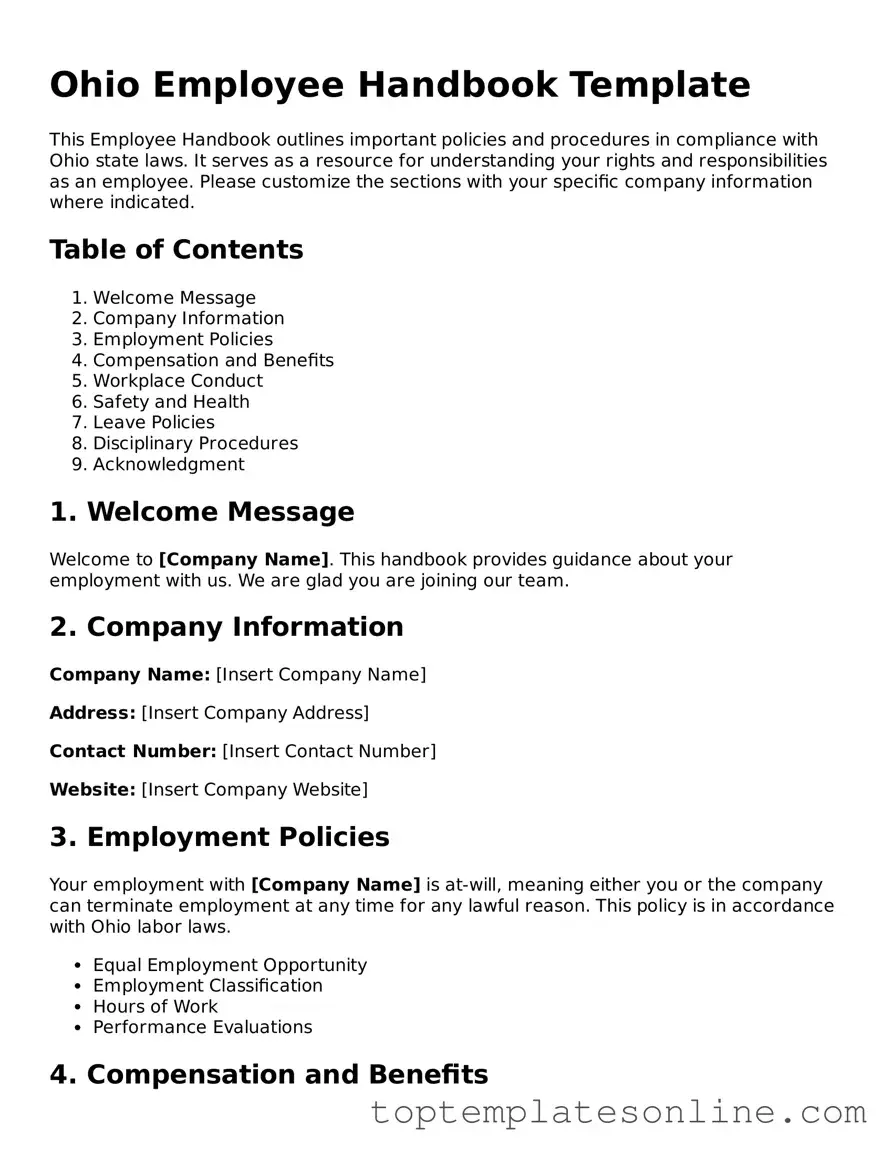Blank Employee Handbook Template for Ohio State
The Ohio Employee Handbook form serves as a crucial document for employers in Ohio, outlining workplace policies and procedures. This form helps ensure that employees understand their rights and responsibilities within the organization. By providing clear guidelines, the handbook fosters a positive work environment and promotes compliance with state laws.
Customize Employee Handbook Here
